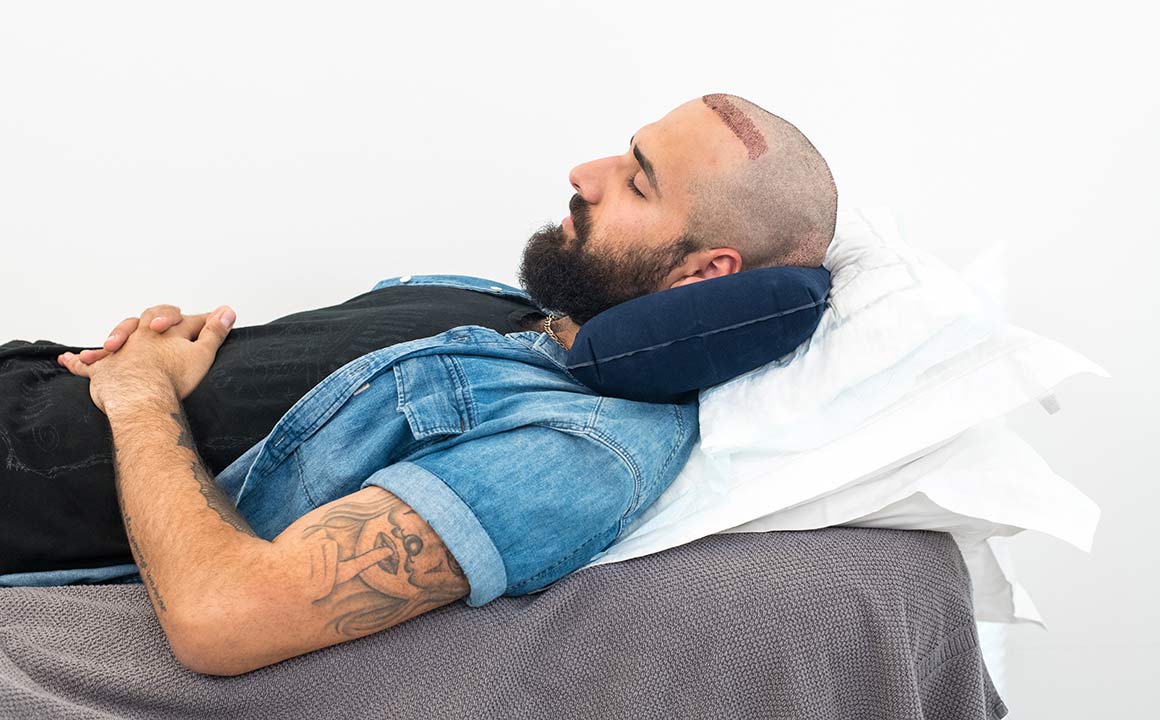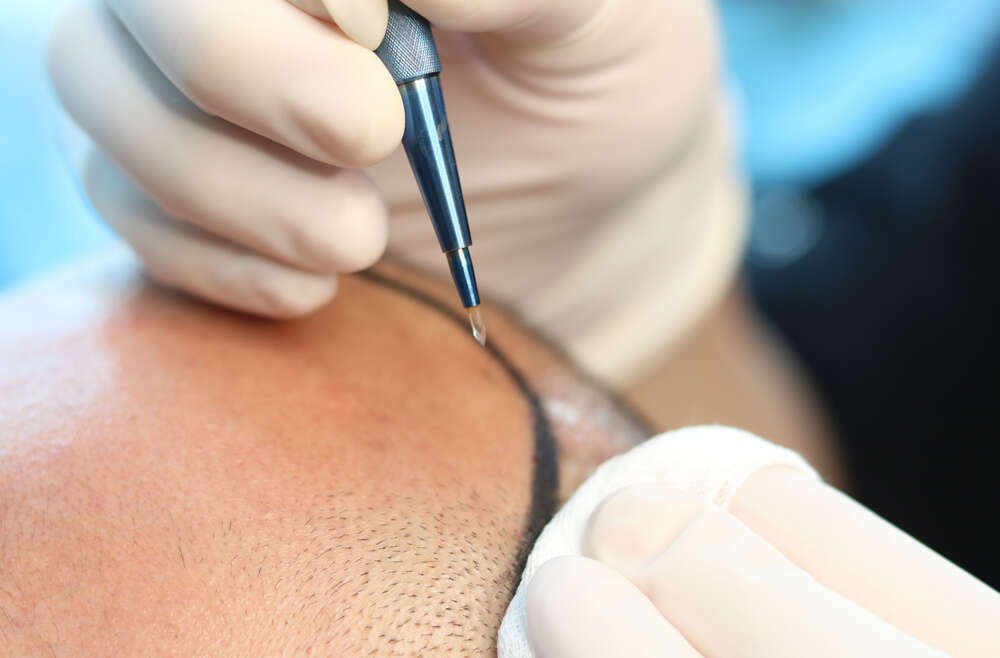Table of Contents
Preparing for Sleep
Keep the Head Elevated
During the first few nights after your hair transplant, it’s essential to keep your head elevated to minimize swelling and promote healing. Using a recliner or propping yourself up with multiple pillows will help keep your head elevated and maintain the proper angle for sleep. A 45-degree angle is typically recommended for optimal comfort and healing.
Use the Right Pillow
Choosing the right pillow is crucial to ensure your comfort and protect the transplanted grafts. Use a clean, soft pillow to avoid irritation to the scalp. Satin or silk pillowcases are a good choice, as they create less friction against the scalp, reducing the risk of dislodging the grafts.
Manage Swelling and Pain
Swelling and discomfort are common after a hair transplant, but proper management can help you sleep better. Your surgeon may prescribe medications or recommend over-the-counter pain relievers to ease discomfort. Follow their advice and take medications as prescribed. Applying a cold compress to the forehead (not directly on the grafts) can also help alleviate swelling.
Adopting the Proper Sleeping Position
Sleeping on Your Back
Sleeping on your back is the best position after a hair transplant. This position helps protect the grafts and reduces pressure on the scalp. It also helps to maintain the head’s elevation, which is essential to minimize swelling.
Avoiding Side or Stomach Sleeping
Sleeping on your side or stomach can put pressure on the grafts, potentially dislodging them or causing irritation. It’s essential to avoid these positions during the first few weeks of your recovery to protect the grafts and ensure optimal healing.
Tips to Improve Sleep Quality
Maintain a Sleep Schedule
Establishing a regular sleep schedule will help your body adjust to your new sleep routine during recovery. Aim for 7-9 hours of sleep each night and go to bed and wake up at consistent times.
Create a Calm Environment
A peaceful, comfortable sleep environment is essential for a good night’s rest. Keep your bedroom cool, dark, and quiet. You
might also consider using a white noise machine or fan to block out any disruptive noises.
Limit Screen Time
Exposure to screens before bedtime can interfere with your ability to fall asleep. The blue light emitted from electronic devices can suppress melatonin production, making it harder to drift off. Limit your screen time in the hours leading up to bedtime to improve your sleep quality.
Avoid Caffeine and Alcohol
Caffeine and alcohol can negatively affect your sleep patterns. Caffeine is a stimulant that can make it difficult to fall asleep or stay asleep, while alcohol can disrupt your sleep cycle and decrease overall sleep quality. Avoid consuming these substances, particularly in the hours leading up to bedtime.
How Long to Follow Sleep Precautions
It’s essential to follow the sleep precautions and guidelines provided by your surgeon for the duration of your recovery. Generally, patients should adhere to these recommendations for 10-14 days after the procedure. However, individual recovery times may vary, and you should consult your surgeon for personalized advice.
When to Consult Your Surgeon
If you experience any unusual symptoms, such as severe pain, excessive bleeding, or signs of infection, contact your surgeon immediately. It’s essential to address any concerns early to prevent complications and ensure the best possible outcome for your hair transplant.
Can I use a travel pillow after a hair transplant?
When can I return to my regular sleeping position after a hair transplant?
Can I wear a hat or headband while sleeping after a hair transplant?
How soon can I wash my hair after a hair transplant?
Will I need to take time off work after a hair transplant?
Conclusion
Taking the necessary steps to ensure a good night’s sleep after a hair transplant is crucial for a successful recovery. By following the guidelines provided in this article, you’ll be on your way to enjoying the benefits of your new hair and improved appearance. Remember to consult with your surgeon if you have any concerns or questions about your recovery process.
You May Aslo Like: Jamie Laing Hair Transplant: A Transformation Journey





